Cyberpedia Library
<> Browse to Next Essay >
Tipton, Billy (1914-1989): Spokane's Secretive JazzmanHistoryLink.org Essay 7456Printer-Friendly Format
The otherwise low-key life story of Billy Tipton -- an obscure jazz pianist who worked out of Spokane, Washington, for 40 years – took a startling plot twist upon his death on January 21, 1989. A few days later, the director of the Ball & Dodd Funeral Home informed his stunned wife and children that the deceased musician had actually been a woman. The discovery that Tipton had successfully masqueraded as a man for more than 50 years was initially a local “human interest” news item, but one with enough lurid mystery that it subsequently sparked international headlines, TV news coverage, magazine essays, a biography, and countless academic and bar-room gender identity debates.
Life as a Girl
Dorothy Lucille Tipton was born in Oklahoma City, Oklahoma, but when her parents divorced at age four, she was sent to live with an aunt in the great jazz town of Kansas City, Missouri. While attending Southwest High School, she studied piano, took up the saxophone, and, already influenced by the jazz culture there, began calling herself “Tippy” Tipton. But as a female she was denied the chance to join the school band.
After rejoining her mother in Oklahoma, Tipton began courses to complete her senior year in September 1932, and while attending Connors State College High School she was finally allowed to join the boys in a school band. Tipton -- who’d begun dressing and grooming herself in a man’s fashion around 1934 in order to fit in with the “look” of the all-male bands -- found some work playing in smoky Oklahoma honky-tonks like the Green Lantern, and then on the road with the Banner Playboys who featured that regional popular blend of swing jazz and country music known as “Western Swing.”
Eventually she decided to permanently take on the role of a male musician -- “Billy Lee Tipton” – and then took the daring ruse a big step further by coupling with a girlfriend who was soon calling herself “Mrs. Tipton” -- a title that five different women would hold over the following years.
What’ll I Do?
Most theories offered up to explain why a young person might take the drastic step of creating a false new persona, and then commit to that lifestyle for the remainder of their years, touch on matters of a sexual and/or socio-economic nature. Interestingly, the published observations and speculations surrounding Tipton’s remarkable transformation don’t even agree on where and when this all occurred -- but they do generally concur that Tipton had figured that in order to make a living in a jazz big-band and tour around with a busload of men, she’d have to pretend to be male.
Certainly, making the radical move of adopting a false persona placed unfathomable pressures on the young musician, but among the reasons for Tipton to do so, as one biographer, Sally Lehrman, hypothesized was that the act was likely “a concession to the economic pressures of the Great Depression and the reality that women jazz musicians didn’t get jobs.” Diane Wood Middlebrook, another writer who wrote of Tipton’s double life, added that “In order to keep playing jazz, without suffering from discrimination or judgment, Dorothy continued to live as a man for the rest of her life.”
Sophisticated Swing
At Oklahoma rooms like the Locust Grove and the Swing Time, Tipton honed his chops and stage presence and by mid-1936 he was leading his own band and appearing regularly on KFXR radio. In 1938 the band was bumped out of its Swing Time gig and Tipton joined up with Louvenie’s Western Swingbillies who had a steady gig at Brown’s Tavern and a regular show on radio KTOK.
By 1940 Tipton had joined on with Scott Cameron’s big-band, which played dances all around the Midwestern states and into Wyoming and Colorado. Then in 1941 he moved to Joplin, Missouri, and gigged for two and a half years at the Cotton Club with George Mayer’s band. After that he joined the popular Ross Carlyle band, which toured from Memphis to Topeka and all around the region. Then Tipton spent about two years playing music in Texas.
In 1949, Tipton got an offer to join up again with George Mayer where they could get in on the Pacific Northwest club circuit action. The Sophisticated Swing Trio’s first gigs weren’t the most promising -- some stubborn tavern crowds insisted that the jazz group try to play country music -- but their debut gig at the Shalimar Room in the rough and tumble logging town of Roseburg, Oregon, did have an up-side to it. It just so happened that a Roseburg radio station regularly recorded (onto acetate “instant discs” and for later broadcast) the Thursday night shows by whatever band was booked at the Shalimar, and so four of the trio’s performances of such jazz standards as “Flying Home,” “If I Knew Then,” and “Sophisticated Swing,” still survive.
Over the next three years Mayer’s combo worked the circuit, playing every small town in Oregon from Astoria to Umpqua, and in Washington from Longview to Walla Walla, and from Pocatello, Idaho, to Great Falls, Montana. In time Spokane's Dave Sobol Theatrical Agency began booking their dates -- including some at Sobol’s own swanky Coeur d’Alene, Idaho-based Boulevard Club, where they shared the stage with touring stars including the Ink Spots, the Delta Rhythm Boys, and Billy Eckstine.
Hi-Fi Piano
In 1951 Tipton eased into a cushy Elks Club solo-piano gig in Longview, Washington, but soon formed his own trio by recruiting Kenny Richards (bass) and Dick O’Neil (drums), and began a work association with Sobol. By 1954 the Billy Tipton Trio -- which now included Ron Kilde (bass) -- was playing upscale venues like Spokane’s Ridpath Hotel and Davenport Hotel. The band also continued to travel a lot, and it was while doing a show at King’s Supper Club in Santa Barbara, California, in 1956 that a talent scout for the Los Angeles-based budget label, Tops Records, discovered them. After signing a contract, and doing some recording sessions (in June and July) at the Hollywood studios of Capitol Records, two albums -- Sweet Georgia Brown and Billy Tipton Plays Hi-Fi on Piano -- were issued in early 1957 and included versions of such classics as: “What’ll I Do,” “The Man I Love,” “Willow Weep For Me,” “Can’t Help Lovin’ Dat Man,” and “Don’t Blame Me.”
Let’s Go!
Having sold a respectable 17,678 copies in 1957 alone, the albums -- while not exactly smash hits -- did bring the trio more notoriety, and in theory, better gigs. But when a new Reno, Nevada-based casino called the Holiday Hotel offered up the lucrative house-band position in June 1958, Tipton disappointed his band-mates by declining the opportunity, ignoring Tops offer to record four additional albums in Hollywood, and instead opted to move to his final home in Spokane, where the trio played weekly and he worked daily as a talent booker for Sobol.
Tipton carried on playing local gigs at rooms like the Green Monkey and the Tin Pan Alley, helping younger musicians get work through the booking agency that he eventually ended up owning, and retiring from performing in the 1970s only after arthritic fingers made it difficult to play.
Don’t Blame Me
As the 1960s unfolded, Tipton and his fifth wife created a family that happily revolved around three adopted children. Those adoptions were necessary due to his “sterility” -- which, as he reportedly explained to each of his successive wives -- had been caused by a horrific car wreck that had left him with permanent ribcage damage and disfigured genitals.
But, upon the death (due to a bleeding ulcer) of this friendly family man, his secret was finally out. While the family tried to cope with the shocking revelations, various puzzling aspects of Tipton’s bizarre life story captured the media spotlight. Various elements within the entertainment industry did their part to mark Tipton’s passage -- some in an honorable way, others less so.
Within weeks there was a buzz about possible bio-pic movie deals in-the-works, print tabloids like the National Enquirer and Star (and TV corollaries like the Sally Jessy Raphael show) began exploiting the story. Thus began some serious mythmaking: New York magazine quickly glamorized Tipton’s career by lauding him as a “renowned saxophonist” -- a flattering description that would probably have surprised a musician whose name, as The Seattle Times put it, had recently been read by more people in “headlines than probably ever saw it on marquees. Tipton was a star that had to wait until after death to go supernova.”
But while some people chose to engage in speculative psycho-sexual analyses (and ponder just exactly how none of his wives had ever had even the faintest clue about their husband’s genuine sex, and apparent lesbianism), others detected a certain tinge of sadness to the whole disheartening situation whereby a talented musician purportedly got herself trapped into a stressful sham by apparently believing the false notion that to gain steady and respectable employment one had to be, or appear, male.
Can’t Help Lovin’ Dat Man
It took the astute cultural critic, Clark Humphrey, to point out that Tipton was in all likelihood just “someone who saw himself as a man born with the wrong equipment” and therefore, the “story isn’t a tale of tragedy but of triumph. Tipton wasn’t a jazz great, and probably knew he’d never be one, but he died a success at being something, and someone, he wanted against all odds to become -- and without the benefits of surgeries, shots, or hormone pills.”
The life challenges Tipton had faced resonated deeply with a number of sympathetic fellow artists whose musical responses were both touching and dignified: the folksinger, Phranc, issued a haunting tribute song, “Tipton,” and an all-woman group, the Seattle-based Billy Tipton Memorial Saxophone Quartet, began a long string of shows -- most recently under the simplified name of the Tiptons -- to honor his memory.
This file made possible by: The State of WashingtonWashington State Department of Archeology and Historic Preservation
Billy Tipton Plays Hi-Fi on Piano, 1957
Billy Tipton biography Suits Me by Diane Wood Middlebrook, 1998Dust jacket
Sources:
“Musician's death at 74 Reveals He was a Woman” The New York Times (Associated Press), February 2, 1989, p. A-18; Billy Tipton Trio, Sweet Georgia Brown, mono LP, (Los Angeles, CA: Tops Records L1522 / 1957); Billy Tipton, Billy Tipton Plays Hi-Fi on Piano, mono LP, (Los Angeles, CA: Tops Records L1534 / 1957); Kit Boss, “No Rest In Peace,” The Seattle Times, March 19, 1989) pp. L-1, 6; “Billy Tipton Story Headed for Hollywood” Seattle Weekly, May 31, 1989; Sally Lehrman, “Billy Tipton -- Self-Made Man,” Stanford Today May/June, 1997; Diane Wood Middlebrook, Suits Me: The Double Life of Billy Tipton (New York: Houghton Mifflin Company, 1998); Judy Doenges, “A Question of Gender, The Seattle Times June 14, 1998) p. M-2; Clark Humphrey, “Suits Me...” book review, The Stranger, June 25, 1998; Holly Brubach, “Swing Time” The New York Times, June 28, 1998, Sec. 7 p. 9;“Billy Tipton Biography,” Duke University Music Department jazz archive website accessed August 2005 (http://www-music.duke.edu/jazz_archive/ artists/tipton.billy/01/); Mike Callahan, “Tops/Mayfair Story,” Both Sides Now Stereo Newsletter website (http://www.bsnpubs.com/).
By Peter Blecha, September 17, 2005
TURN THE SOUND DOWN ON THE YOU TUBE VIDEO, AND YOU'LL SEE HOW THE 'GIZMO' SEEMS TO 'FLOW' WITH THE MUSIC.
Do you like a good cocktail with Jazz music? Build this one for yourself!
Subscribe to:
Post Comments (Atom)
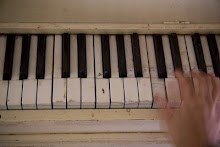

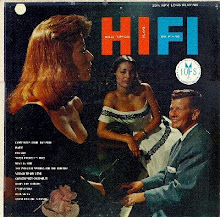

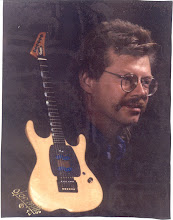




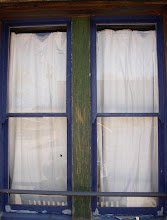








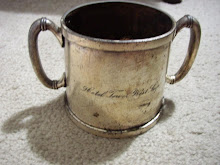
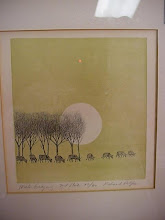



No comments:
Post a Comment